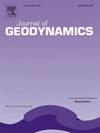The tectono-stratigraphic and magmatic evolution of conjugate rifted margins: Insights from the NW South China Sea
Abstract
This study is based on a careful analysis of high-quality reflection seismic sections located at the tip of the NW South China Sea V-shaped rift basin. Using the CGN-1 section, a seismic line imaging the complete sedimentary and magmatic architecture of conjugate rifted margins, we: (1) provide a detailed description of the crustal architecture; (2) define extensional domains, which we relate to specific deformation phases; and (3) determine the tectono-stratigraphic evolution linked to rifting. Based on these, we propose a kinematic restoration and quantify the amounts of extension and associated strain rates. We discuss the link between the kinematic evolution and the sedimentary and magmatic record and illustrate it in a Wheeler Diagram. Relying on the identification and characterization of distinct stratal patterns and crustal architectures, we propose qualitative and quantitative criteria to interpret two critical rift events that are necking and hyperextension. These two events are linked to the individualization and subsequent dismembering of a so-called keystone, here referred to as H-block. It is the first time such an approach is used to decipher the tectono-stratigraphic evolution of a complete syn-rift mega-sequence across present-day conjugate rifted margins. This study differs from previous interpretations of correlative surfaces in the distinction between: (1) different types of top basement; and (2) syn- and post-tectonic packages within the syn-rift record. It leads to new interpretations of the tectono-stratigraphic evolution of the NW South China Sea and has the potential to be used as a new approach to analyze, quantify and correlate events recorded in seismic sections across rifted margins.

 求助内容:
求助内容: 应助结果提醒方式:
应助结果提醒方式:


